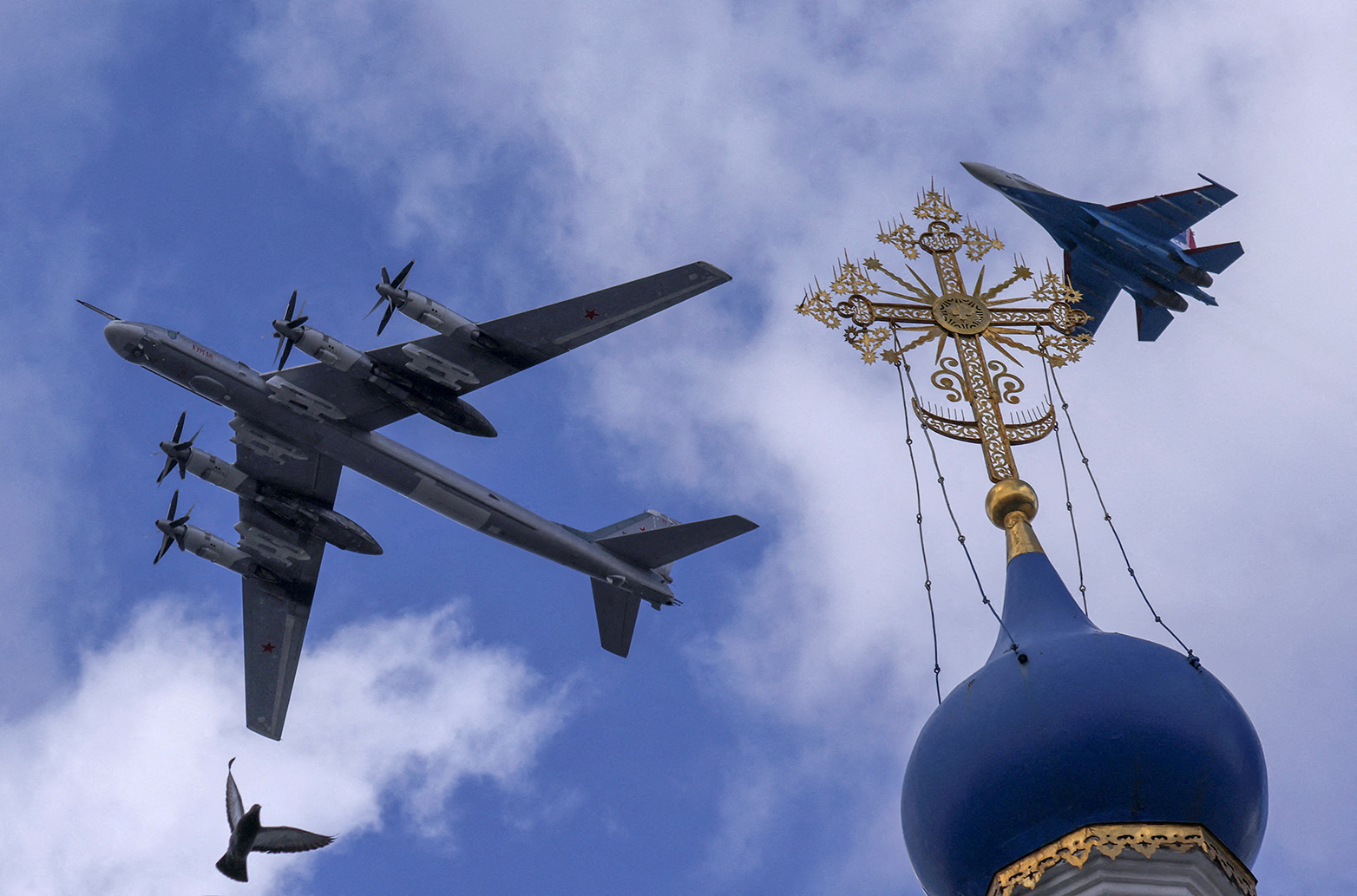Russia’s War and the Global Nuclear Order
Russia’s war in Ukraine, conducted behind the shield of nuclear deterrence and the threat of escalation, has increased the salience of nuclear weapons worldwide. It endangers the multilateral norms and processes in place to prevent nuclear proliferation and complicates any near-term prospects for disarmament, argues Névine Schepers in this CSS Policy Perspective.

A Russian Su-35S combat aircraft and a Tu-95MS strategic bomber fly in formation above a church during a rehearsal for the flypast during the May 9 military parade in Moscow, Russia May 4, 2022. Maxim Shemetov / Reuters
Key Points:
- Aggressive nuclear signaling and nuclear risk manipulation enhances the potential for misunderstanding and should not be accepted as a new normal.
- Increased reliance on nuclear deterrence is unlikely to lead to nuclear proliferation cascades in the near future as long as US security guarantees remain credible to its allies.
- European publics need to re-learn the dynamics of nuclear deterrence while governments should address nuclear risks without shunning pro-disarmament communities.
- The nuclear non-proliferation regime will have to adapt to a new phase in which Russia is no longer a responsible actor but actively working against many of its established norms and practices.